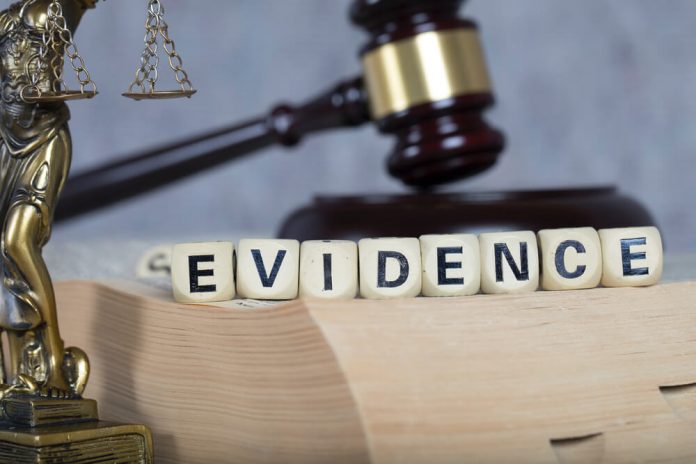This article is written by Riya Yadav, a student of Symbiosis Law School, Nagpur. This article seeks to explain the meaning and importance of prima facie evidence in India.
It has been published by Rachit Garg.
Table of Contents
Introduction
The term “prima facie” refers to a legal scenario in which the prosecution presents enough evidence to prove that the defendant is guilty. If you work in the legal field or know anything about legal terminology, you’ve most likely heard of this term. Understanding such legal terms and their significance is essential, whether you run a small business or a large corporation. This is why we will examine the fundamentals of this term and attempt to understand its significance in the court of law.
What is prima facie evidence
The term “prima facie” is derived from Latin and means “at first sight” or “at first appearance”. This is adequate to establish a fact or raise suspicion until it is disproved in court. A prima facie case is a cause of action or defence that is sufficiently established by a party’s evidence to justify a verdict in his or her favour, although even if the case is determined to be prima facie, this does not guarantee that judgement by the court will be in favour of the plaintiff. A prima facie case is one in which the pre-trial evidence is reviewed by a judge and found to be sufficient to justify a trial. In legal terms, it has been given a specific meaning and is used in both civil and criminal law. It can be used to imply that the evidence presented by a litigant in support of its claims is sufficient to warrant a favourable order and to shift the burden of proof to the opposing party.
In an adversarial proceeding, the party initiating the case, or the plaintiff, is tasked with presenting a prima facie case—that is, presenting enough evidence to the adjudicating authority to support the claims raised by it. Once the plaintiff successfully establishes a prima facie case and summons this up, the burden of proof shifts to the opposing party, who must now provide evidence to disprove the plaintiff’s case. However, if the plaintiff fails to establish a prima facie case, the opposing party may not even be required to present evidence to the contrary and may obtain a favourable order because it is the duty of a person asserting a claim to present evidence and prove their case.
Prima facie evidence in civil cases
The burden of proof is placed on the plaintiff in civil litigation, that is the plaintiff is the one who presents the cogent evidence for the court to deem the claim valid. If the plaintiff fails to provide sufficient evidence to support its claim against the defendant for the alleged injury, the court will dismiss the case before it goes to trial. If the court determines the existence of a “prima facie case”, the defendant must show evidence to refute the assertions made in the prima facie case in order to win the lawsuit.
The complaint that is filed with the court needs to provide background information on why the lawsuit was made and what the injury was. It should also include the manner in which the defendant may have caused or contributed to the damage/injury. Before the trial can begin, the court must determine whether the case is valid and has enough merit to warrant a hearing. The judge must determine whether enough evidence exists to establish a presumption in favour of the plaintiff during the initial examination of the claim, which occurs during the pre-trial hearing. Once the judge has determined this, the case is regarded to have prima facie evidence. After this, the case is permitted to go into further trial.
According to sub-section (1) of Section 26 of the Civil Procedure Code, every suit shall be instituted by the presentation of a plaint, and according to sub-section (2) of the same section, facts must be established by affidavit in every plaint.
An example of prima facie evidence in a civil case
An ABC Bookstore may file a claim against one of its suppliers, XYZ, if XYZ fails to deliver an order of books, causing the bookstore to lose customers. The company needs to demonstrate “at the initial or prima facie stage” that the supplier violated the contract, affecting the company and its customers. Once ABC Bookstore has successfully established a prima facie case, the burden of producing evidence or proof shifts from ABC Bookstore to supplier XYZ. Now, supplier XYZ must demonstrate that the allegations levelled against him are baseless or insufficient to warrant a conviction. For example, he can present supporting evidence to show that, according to the contract, the payment had to be made in advance for the order and that only after the payment was made would he supply the books, implying that the ABC bookstore did not make the full advance payment by the date specified in the contract, and hence he did not supply the books.
Prima facie evidence in criminal cases
In a criminal case, the prosecution bears the burden of proof (with the exception of special cases like cases under Unlawful Activities (Prevention) Act, 1967 (UAPA), Narcotic Drugs and Psychotropic Substances Act, 1985 (NDPS) etc., in which the defendant must ‘prima facie’ demonstrate his innocence). This implies that the prosecution must demonstrate this beyond a reasonable doubt in order to proceed with the trial of the defendant for the offence. As a result, the level of proof that the prosecution must meet in the prima facie case stage is lower than the requirement for proving the defendant’s guilt. A prosecution simply needs to present credible evidence in support of each element of a crime to establish a prima facie case.
A prima facie case is an early assessment for a court to assess if the prosecution may proceed to fully prosecute the defendant for the crime. However, in order to get a conviction, the prosecutor must establish the defendant’s guilt on each of the factors beyond a reasonable doubt. As a result, even if a prosecutor can build a prima facie case on all components of a crime at the pre-trial stage, the prosecution must still show the defendant’s guilt beyond a reasonable doubt at the trial stage.
According to Section 226 of the Code of Criminal Procedure, 1973 when the accused appears or is brought before the Court in pursuance of a commitment of the case, the prosecutor shall open his case by describing the charge brought against the accused and stating by what evidence he proposes to prove the guilt of the accused. Also, Section 161 of the same Code, titled “Examination of witnesses by police” provides for oral examination of a person by any investigating officer when such person is supposed to be acquainted with the facts and circumstances of the case. The object and purpose of Section 161 are to collect evidence regarding the commission of an offence by examining and recording the statements of the material witnesses in respect of the commission of the offence.
Example of prima facie evidence in criminal cases
Suppose person ‘A’ accused person ‘B’ of ‘theft’. If the State, on behalf of A, only presents evidence that B came to his residence, the theft charge will be rejected. B would not even have to produce any evidence and may instead request an acquittal based on the State’s inability to prove a prima facie case of theft. However, if the State exhibits proof of B’s presence on his premises and stealing certain objects for which A has accused B of theft, such as eyewitness testimony, then the standards of a prima facie case for that aspect of the crime may be met and B may be charged with theft. Now, even if B has proof indicating an eyewitness was wrong, he or she cannot move for a verdict right away and must offer that evidence in rebuttal during the trial stage.
Implications of prima facie evidence
The implications of prima facie evidence are as follows:
- The plaintiff must present prima facie evidence and must present a plausible enough case to proceed to trial.
- If the plaintiff does not present adequate evidence that a crime was committed or could have been committed by the defendant, the party being sued, then the judge can dismiss the case.
- The notion of prima facie is not limited to the pre-trial phase of a case. It can be used as a general standard of evidence.
- The goal of this phase of the trial is not to prove that the defendant is guilty, it is merely to show the court should proceed with the trial. Consequently, the judge merely decides whether the case will go to trial without making any kind of judgement about the guilt of the defendant.
- While the standard of proof for prima facie evidence is low, it is nevertheless an important part of the legal process. By making the plaintiff present a basic version of their cases, people are protected against frivolous or abusive lawsuits.
- In both civil and criminal cases, the defendant is being given additional legal protection. In criminal cases, the defendant is protected from abuse by law enforcement and the state. In civil cases, the defendant is protected from their fellow citizens’ frivolous suits. This is especially important to keep those who are wealthy or socially privileged from intimidating or coercing those who are more vulnerable through the threat of litigation. Several prima facie examples show how this standard of evidence can be used.
- A litigant seeking discretionary relief such as a temporary injunction must also show a prima facie case, for which the courts are only obligated to examine the essential facts and not dive into the merits of the case.
Judicial pronouncements
Some of the important judicial pronouncements with regard to prima facie evidence are as follows:
- Supreme Court of India in Marin Burn Ltd. v. R.N. Banerjee (1958) pronounced that when determining whether a prima facie case has been established, the relevant consideration is whether it was possible to arrive at the conclusion in question based on the evidence presented and whether that was the only conclusion that could be reached based on that evidence.
- The Supreme Court of India in Jayendra Saraswati Swamigal v. State of Tamil Nadu (2008), held that one person’s confession that he was involved in the conspiracy along with others is not sufficient toestablishg a prima facie case.
- In the General Electric Company of India Ltd. v. the Fifth Industrial Tribunal, West Bengal and Ors. (1990), it was stated that the phrase “prima facie” means at first sight or as far as it can be judged from the first disclosure. A prima facie case means that the evidence presented on the record would allow the plaintiff’s desired conclusion to be reached. A prima facie case has progressed through sufficient proof to the point where it would support a finding if contrary evidence is ignored.
- Supreme Court of India in Kehar Singh and Ors v. State (Delhi Admn.) (1988) that the fact that the two defendants who caused the death were seen isolating themselves on the roof and trying to hide as well as their conversing about the assassination with the family members, was enough to form a prima facie case. This is the case of the assassination of India’s former Prime Minister, Mrs Indira Gandhi.
Conclusion
The Indian judiciary has elaborated on the meaning of the phrase ‘prima facie case’ to the point where it now has a legal meaning and standing. Despite this, the degree of what constitutes a prima facie case varies from case to case and lacks a concrete definition due to the fact that each case is unique. What constitutes a prima facie case is determined by a court of law’s discretion because a judicial officer adjudicating a matter must be satisfied with the averments made and evidence presented by a litigant/State. To decide whether a prima facie case has been established, the relevant factor is whether the conclusion in question was conceivable based on the evidence presented, rather than whether that was the only result that could be reached based on that collection of facts.
Frequently Asked Questions (FAQs)
What does prima facie exactly mean?
Prima facie means ‘on the face’ or ‘at first glance’. In law, it can refer to either evidence that is regarded plausible but susceptible to refutation or a stage in a pre-trial proceeding in which it is assessed whether the plaintiff/complainant has a sufficiently plausible case to go to trial.
Are prima facie and res ipsa loquitur similar?
The Latin phrase res ipsa loquitur means the object speaks for itself. The primary distinction between prima facie and res ipsa loquitur cases is that prima facie cases require numerous pieces of evidence to be valid and go to trial. The doctrine of res ipsa loquitur, on the other hand, states that the facts of the case are self-evident and do not require any supporting evidence to make them so.
How do you establish a prima facie case?
A prosecution merely needs to present reliable evidence in support of each element of a crime to establish a prima facie case. To achieve a conviction, the prosecution must show the defendant’s guilt on each factor beyond a reasonable doubt.
What is the prima facie proof standard?
According to the prima facie standard of proof, a party must produce adequate evidence that a certain claim is true at the surface level. The subject is still being debated and even refuted. As a result, the prima facie standard of proof is low.
What is an example of prima facie reasoning?
During the pre-trial phase of a case, the State, on behalf of the complainant, in a murder case may be required to present prima facie proof that a person was murdered, maybe by the defendant. Thus, prima facie evidence would include evidence that the deceased was murdered, that the victim seemed to die as a result of the murder, and that the defendant was capable of committing the murder.
References
- prima facie | Wex | Legal Information Institutehttps://www.law.cornell.edu ›
- prima facie evidence Definition & Meaning Dictionary.comhttps://www.dictionary
- Principle XII.PrimafacieevidenceTrans-Lex.orghttps://www.trans-lex.org prima-faci
- /www.criminaldefenselawyer.com/resources/criminal-defense/criminaldefense-case
 Serato DJ Crack 2025Serato DJ PRO Crack
Serato DJ Crack 2025Serato DJ PRO Crack












 Allow notifications
Allow notifications



